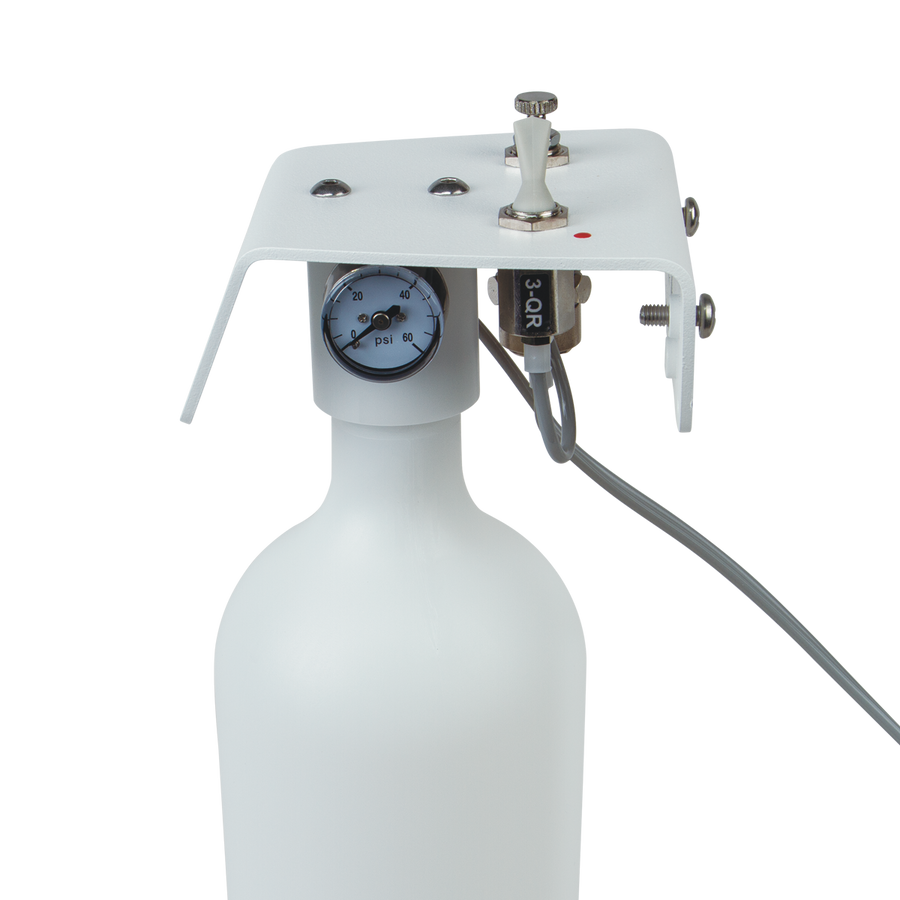In previous Practice Tips we discussed how to install a self-contained water system, but why would you want to do so? What are the benefits to using an independent water source?
Water Systems Used for Infection Control
Over the past two decades, much has been written about dental unit water lines (DUWL) and their impact on infection control. Way back in 1992 the American Dental Association issued a standard to help address water quality issues. Later on, they set a goal for dental equipment manufacturers to improve the quality of water in a dental unit. The ADA wanted DUWL to have less than 200 bacteria colony forming units (CFU) per milliliter of water (below the standard for drinking water). During testing, many dental units had 10 or even 100 times this level.
Water Flow
Most typical household (and dental office) plumbing consists of 3/4" or 1/2" inside diameter pipes. This provides a fairly robust volume of water flow, particularly relative to the surface area on the inside of the pipes. Most dental units have water lines that are mostly either 1/8" or even 1/16" inside diameter. This provides a very low volume of water flow, when compared to the surface area on the inside of the hose.
Because dental units sit idle for long periods of time (overnights and on weekends), the water goes stagnant (zero flow) during this time. In addition, many dental devices (e.g. handpieces and ultrasonic scalers) generate tremendous amounts of heat. These conditions are ideal for bacterial growth.
Build-Up of Biofilm
A study conducted at Purdue University found that biofilm forms and grows at a tremendous rate. Not only does the bacteria grow, but the biofilm growth forms a web which traps more bacteria increasing the size of the colony at an exponential rate. In fact, the biofilm mass increased in size so quickly that the study found the lines completely clogged with biofilm in as little as 55 hours!
While reducing bacteria is extremely important in your infection control efforts, just reducing the likelihood of clogging is a tremendous benefit of using self-contained systems. By using a self-contained water system, not only are you able to control the bacterial levels of the water as it enters your unit, you are also able to take steps to counter the growth of bacteria in the lines.
Daily Maintenance
Self-contained water systems are “powered” by the office compressed air. This means air flows into the reservoir of the system to force the water out. This means air flows into the reservoir of the system to force the water out. Since air flows into the water system, use this air to dry the lines at the end of every day. This helps to prevent standing water in the system for prolonged periods. Many water systems have a valve incorporated to flush the lines with air. Or simply install an empty bottle and turn the unit on to perform an air purge.

There are many chemical treatments for your bottles to kill bacteria or inhibit bacterial growth as well. Some of these are used periodically (daily, weekly, etc.) and some are introduced constantly with the unit water.
As we saw last month, installing self-contained is a simple and straight-forward process. Now you now why you should install a self-contained water system. Using self-contained water saves money and improves the quality of your unit water (thus enhance your efforts in infection control). They also reduce down time and repairs (by reducing clogging).


LEAVE A REPLY